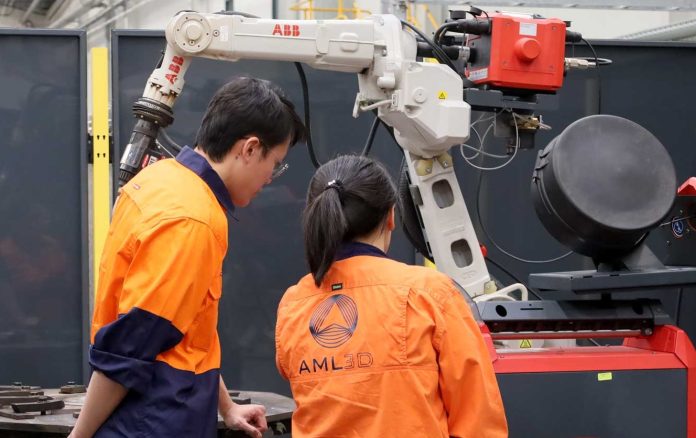
Australian metal additive manufacturing firm AML3D has secured two separate purchase contracts to produce metal 3D printed components from clients in two of its key target markets – defence aerospace and energy (oil and gas).
AML3D, which secured purchase contract from Boeing earlier this year, did not reveal the scope of these new strategically important contracts, nor did it disclose the names of the customers “due to confidentiality requirements and the sensitive nature of these projects”.
For the defence aerospace client, AML3D said it would produce a 500kg nozzle consisting of four segments that will be printed using Aluminimum ER5183.
According to the company, the nozzle will have a combined length of just under two meters; will take approximately seven days to print and will be machined locally in South Australia.
For the oil and gas customer, AML3D will produce a plunger, believed to be the world’s first 3D printed pure titamium part of its kind, which will be used in a processing plant.
“Due to the high pressure and corrosive environment that exists within processing applications, the pure titanium part will not rust and is expected to withstand the high pressures that will be placed upon it,” the company said in a statement.
“The American Petroleum Institute (API) recently approved the Additive Manufacturing standard API 20S for the 3D printing of parts for the oil and gas sector, not only in the USA but utilized Globally, which offers up significant potential once we get a foothold in the market.”
Commenting on the purchase contracts, AML3D Managing Director Mr Andrew Sales said the company expects that further components will be printed for these customers in the near to medium term.
“While the markets we service are largely evolving, the increasing interest in our offering and eagerness of customers to validate the process bodes well for our future success,” Mr sSales said.
These contracts are the culmination of months of technical engineering discussions, and provide a valuable base from which we will build future recurring revenue streams.
“We also anticipate that once these new customers test the capability of our parts, the opportunity to print further parts will be a logical next step.”




















